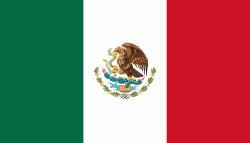Mexican peso
$
The Mexican peso (symbol: $; code: MXN) is the currency of Mexico. Modern peso and dollar currencies have a common origin in the 16th–19th century Spanish dollar, most continuing to use its sign, "$".The current ISO 4217 code for the peso is MXN; prior to the 1993 revaluation, the code MXP was used. The peso is subdivided into 100 centavos, represented by "¢". The Mexican peso is the 6th most traded currency in the world, the third most traded currency from the Americas (after the United States dollar and Canadian dollar), and the most traded currency from Latin America. , the peso's exchange rate was $20.50 per euro, $19.80 per U.S. dollar, and $15.50 per Canadian dollar.

